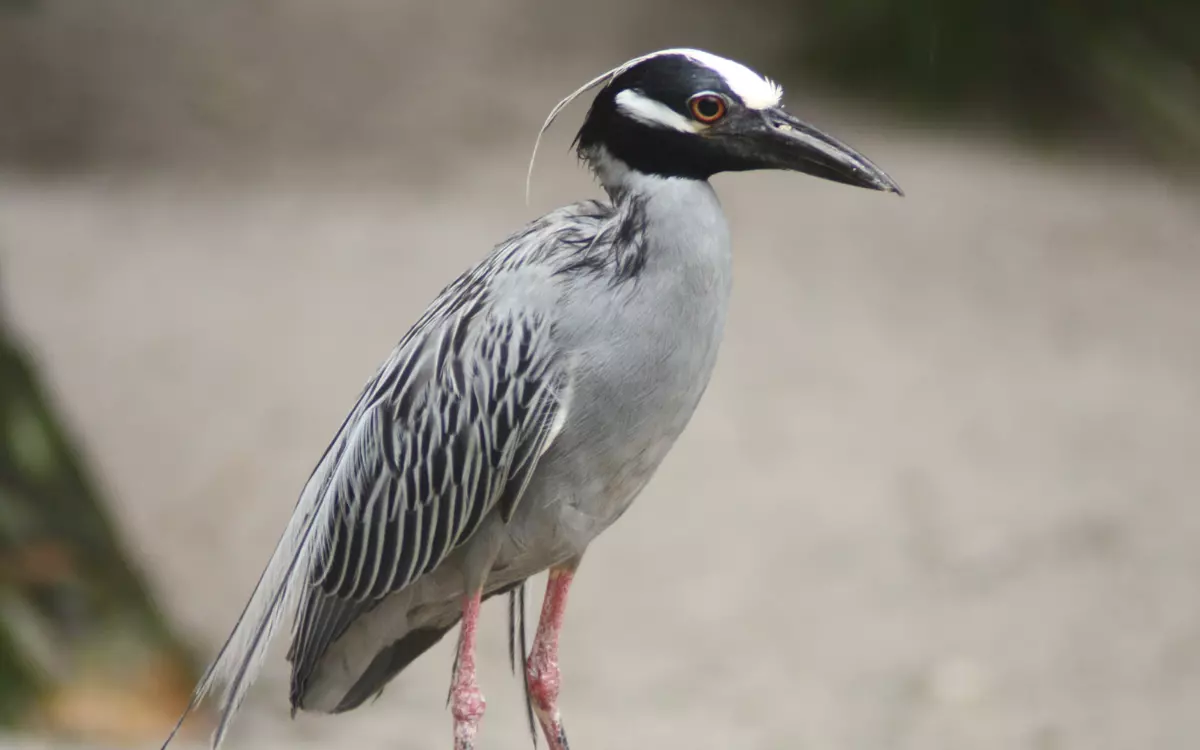14 Warblers In South Carolina: Photo & Id
South Carolina’s diverse landscapes provide the perfect habitat for many warbler species throughout the year.
From the vibrant American Redstart to the striking Hooded Warbler, these small songbirds bring color and melody to our woods, swamps, and parks.
Whether you’re a beginner or experienced birder, this guide will help you identify 14 common warblers you can spot in the Palmetto State.
What Are Warblers?
Warblers are small, active songbirds known for their colorful plumage and beautiful songs. Most are migratory, spending winters in Central and South America before returning to North America to breed. In South Carolina, you can spot different warbler species year-round, with peak diversity during spring and fall migrations.
These birds play an important role in our ecosystem by controlling insect populations. Their distinctive appearances and behaviors make them favorites among birdwatchers.
1. American Redstart (Setophaga ruticilla):

Appearance:
- Males: Black body with bright orange-red patches on wings, tail, and sides
- Females: Gray with yellow patches where males have orange
- Size: 4.3-5.5 inches long
Behavior: American Redstarts are known for their energetic movements. They often fan their tails while foraging, flashing their colorful patches to startle insects from hiding.
Where to find them: Look for American Redstarts in deciduous woodlands and forest edges throughout South Carolina during migration seasons. Some may stay to breed in the northern parts of the state.
2. Pine Warbler (Setophaga pinus):
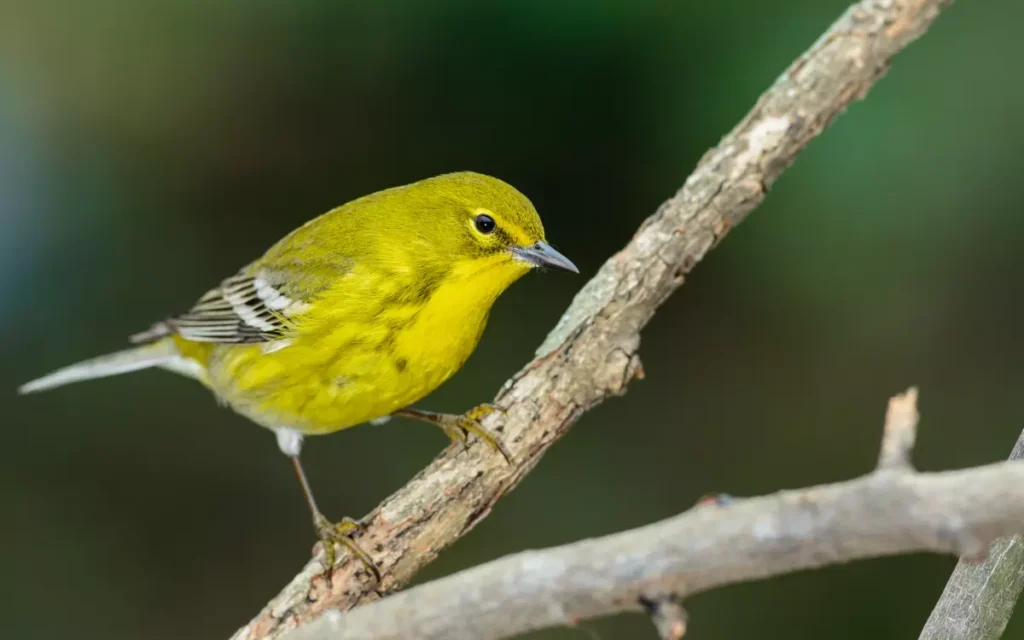
Appearance:
- Olive-green upperparts
- Yellow throat and chest
- White belly
- Two white wing bars
- Size: 5-5.5 inches long
Behavior: True to their name, Pine Warblers prefer pine forests. They spend much of their time foraging among pine needles and cones, often clinging to the trunks and branches.
Where to find them: Pine Warblers are year-round residents in South Carolina, making them one of the easiest warblers to spot. Head to any pine forest or stand of mature pines throughout the state.
3. Prothonotary Warbler (Protonotaria citrea)
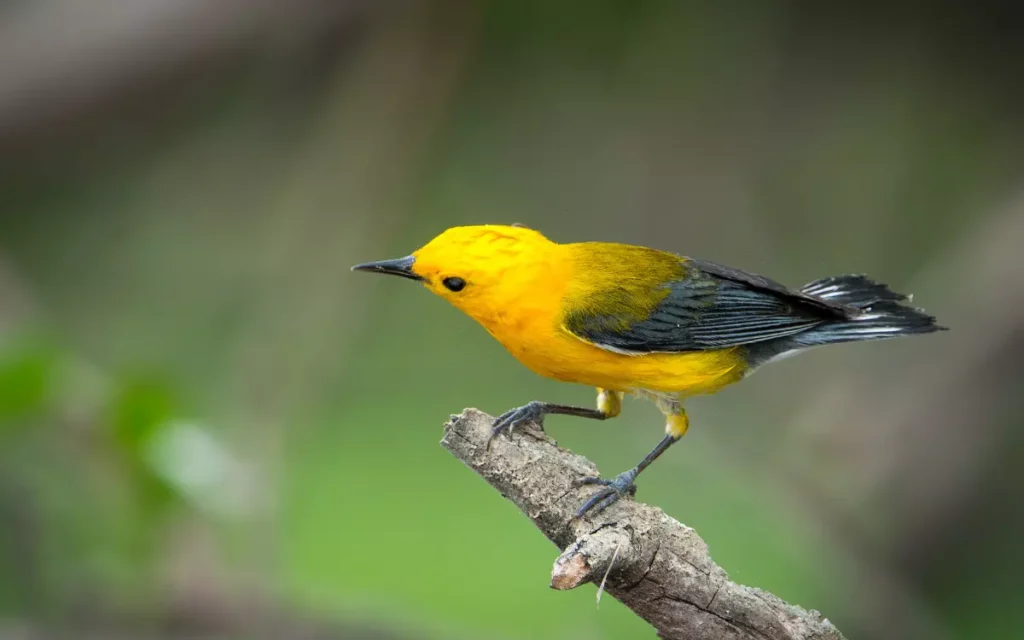
Appearance:
- Bright golden-yellow head and underparts
- Blue-gray wings and tail
- No wing bars
- Size: 5.1-5.5 inches long
Behavior: Unlike most warblers, Prothonotary Warblers nest in tree cavities, often over water. They forage low in trees and shrubs near water bodies.
Where to find them: Look for these stunning birds in wooded swamps and bottomland forests, especially in the Congaree National Park and other wetland areas across South Carolina from April through September.
4. Black-and-white Warbler (Mniotilta varia):
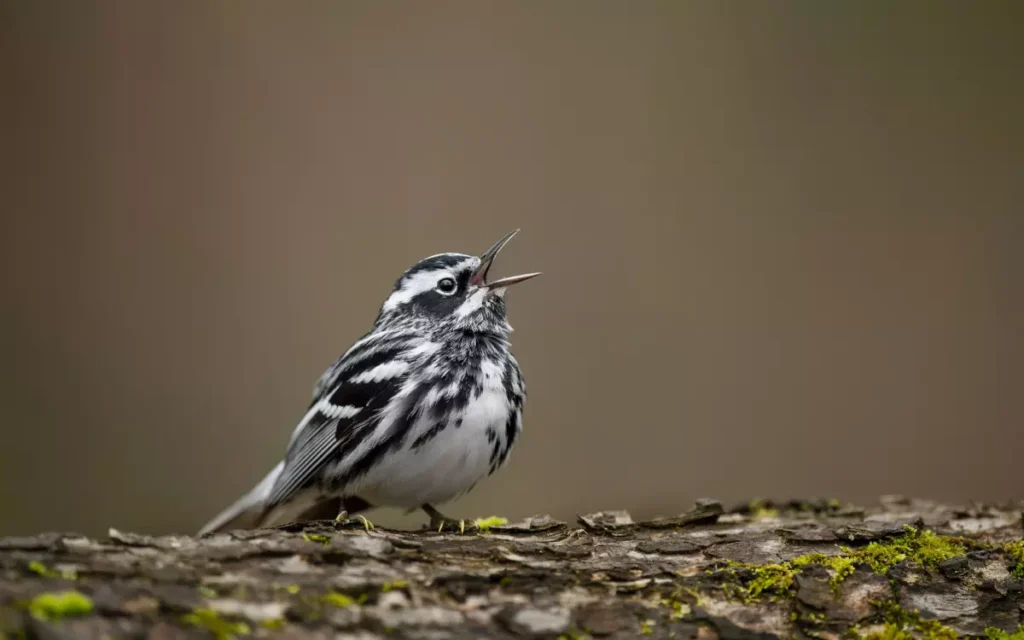
Appearance:
- Distinctive black and white striped pattern (resembling a zebra)
- Males have a black throat; females have a white throat
- Size: 4.3-5.1 inches long
Behavior: These warblers behave more like nuthatches, creeping along tree trunks and main branches while searching for insects in bark crevices.
Song: A high-pitched, repetitive “wee-see, wee-see.”
Where to find them: Black-and-White Warblers can be found in mature forests across South Carolina during spring and fall migrations. Some breed in the northwestern highlands of the state.
5. Yellow Warbler (Setophaga petechia):

Appearance:
- Bright yellow overall
- Males have subtle reddish streaks on chest
- Size: 4.7-5.1 inches long
Behavior: Yellow Warblers forage actively in the canopy of shrubs and small trees, gleaning insects from leaves and twigs.
Where to find them: Look for Yellow Warblers near wetland edges, stream borders, and thickets during migration. They’re most common in South Carolina during spring and fall passages.
6. Common Yellowthroat (Geothlypis trichas):

Appearance:
- Males: Bright yellow throat and chest with distinctive black mask
- Females: More subdued yellow throat without the mask
- Size: 4.3-5.1 inches long
Behavior: Common Yellowthroats prefer thick, low vegetation where they skulk about, often more easily heard than seen.
Where to find them: These warblers are common in marshes, wet meadows, and brushy areas throughout South Carolina. Many stay year-round in the coastal regions.
7. Northern Parula (Setophaga americana)
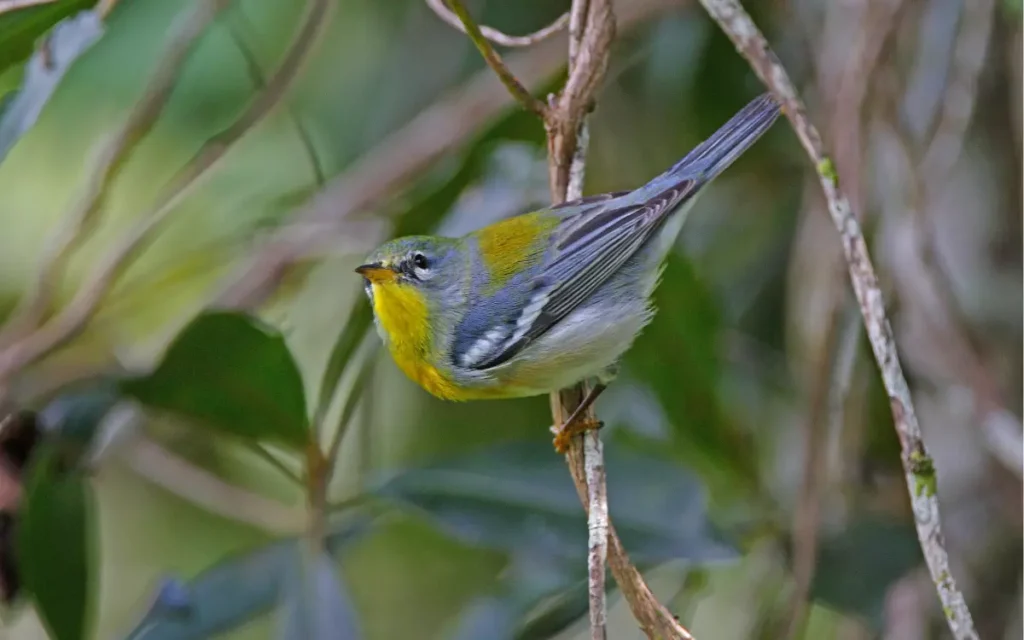
Appearance:
- Bluish-gray upperparts
- Yellow-green patch on back
- Yellow throat and chest with rusty breast band (more prominent in males)
- White eye crescents
- Size: 4.3-4.7 inches long
Behavior: Northern Parulas forage high in the forest canopy, particularly in areas where Spanish moss or similar plants grow.
Where to find them: Look for Northern Parulas in mature forests with hanging moss or lichens. They breed throughout South Carolina, especially in the coastal plain and swamp forests.
8. Magnolia Warbler (Setophaga magnolia)
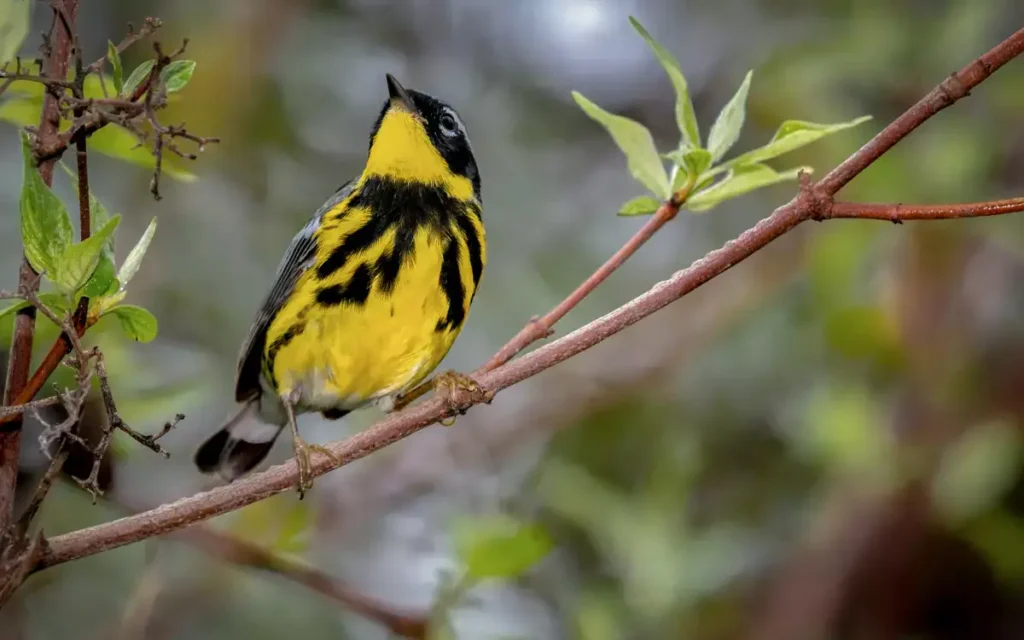
Appearance:
- Gray crown
- Yellow throat and underparts with black streaks
- Distinctive white band across the tail
- Size: 4.3-5.1 inches long
Behavior: Magnolia Warblers forage in the mid to lower portions of trees, often flicking their tails to display the white tail band.
Where to find them: These warblers pass through South Carolina during spring and fall migrations. Look for them in mixed forests and woodland edges.
9. Yellow-rumped Warbler (Setophaga coronata)
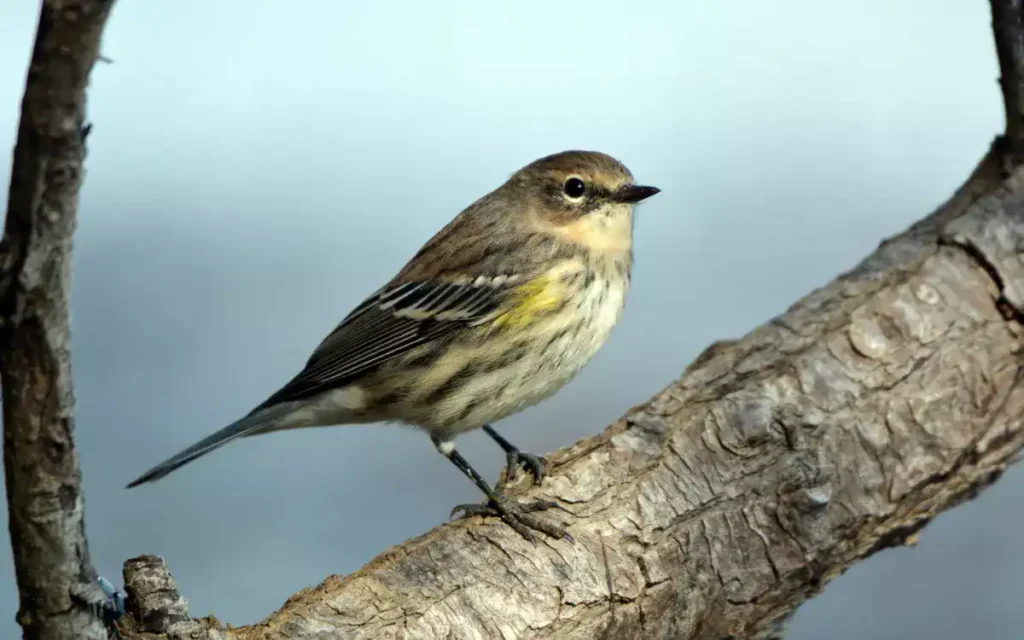
Appearance:
- Gray with white wing patches
- Yellow patches on sides, rump, and (sometimes) crown
- Size: 5.5 inches long
Behavior: Yellow-rumped Warblers are versatile foragers. They catch insects in mid-air, glean them from vegetation, and uniquely among warblers, eat berries, especially wax myrtle and bayberry.Where to find them: Yellow-rumped Warblers are abundant winter residents throughout South Carolina. Look for them in various habitats including coastal wax myrtle thickets, parks, and gardens.
10. Black-throated Blue Warbler (Setophaga caerulescens)

Appearance:
- Males: Deep blue above with black face and flanks, white wing patch
- Females: Olive-brown with faint eyebrow stripe (dramatically different from males)
- Size: 5 inches long
Behavior: Black-throated Blue Warblers forage in the understory and mid-levels of forests, methodically searching leaves for insects.
Where to find them: These warblers pass through South Carolina during spring and fall migrations. Some breed in the higher elevations of the northwestern part of the state.
11. Palm Warbler (Setophaga palmarum)
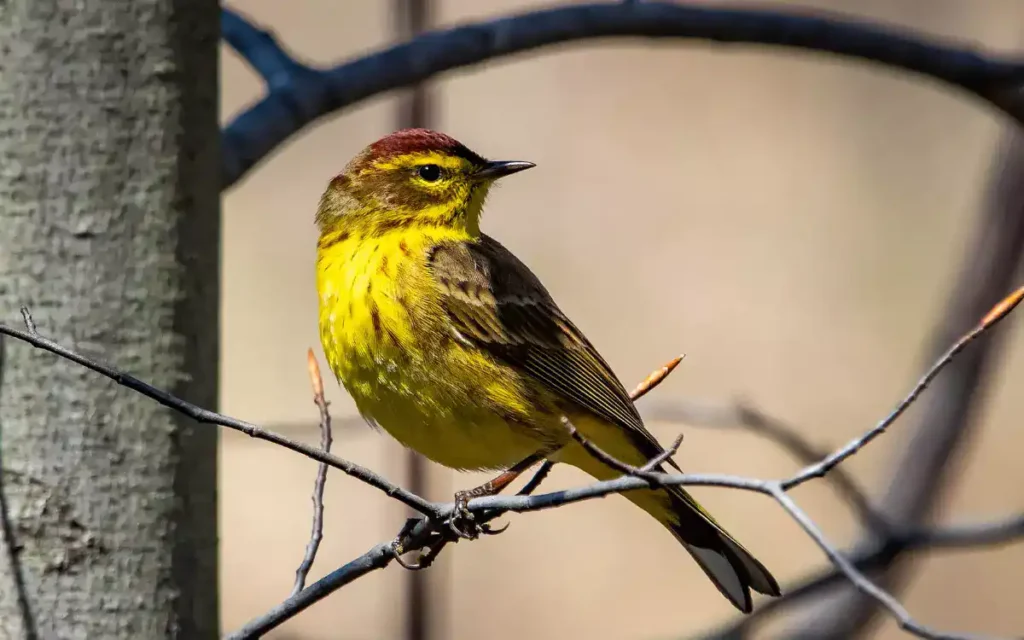
Appearance:
- Brownish-olive above
- Yellow under the tail and throat
- Rusty cap (more visible in breeding plumage)
- Size: 5 inches long
Behavior: Palm Warblers frequently forage on the ground and have a distinctive habit of constantly wagging their tails.
Where to find them: Palm Warblers winter in South Carolina, particularly in open areas, field edges, and coastal regions. Look for them from October through April.
12.Ovenbird (Seiurus aurocapilla)

Appearance:
- Olive-brown upperparts
- White belly streaked with black
- Orange crown bordered by black lines
- Size: 5.5-6 inches long
Behavior: Ovenbirds behave more like thrushes, walking (not hopping) on the forest floor while searching for insects. They’re named for their unique domed ground nest that resembles an old-fashioned oven.
Where to find them: Look for Ovenbirds in mature deciduous and mixed forests with limited understory. They breed in the northwestern parts of South Carolina and are seen statewide during migration.
13. Hooded Warbler (Setophaga citrina)
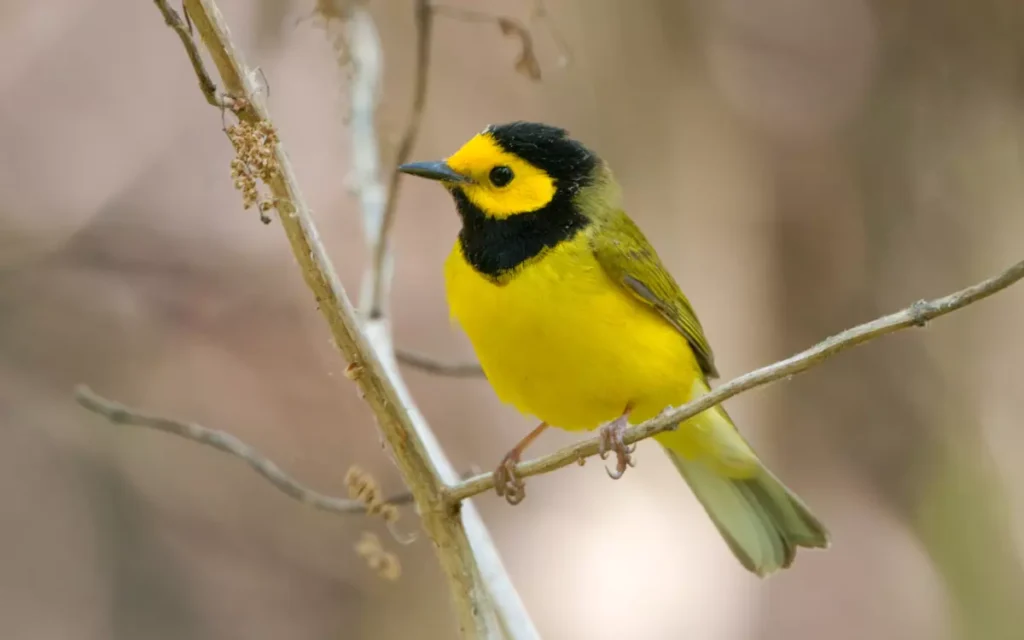
Appearance:
- Males: Bright yellow face with distinctive black hood and throat
- Females: Yellow face without the full hood or with partial hood
- Size: 5.1-5.9 inches long
Behavior: Hooded Warblers prefer the forest understory, often foraging within a few feet of the ground. They frequently fan their tails, showing the white outer tail feathers.
Where to find them: These beautiful warblers breed in mature forests with dense understory throughout much of South Carolina, especially in the Piedmont and Coastal Plain regions.
Related aricle:
14. Cape May Warbler (Setophaga tigrina)
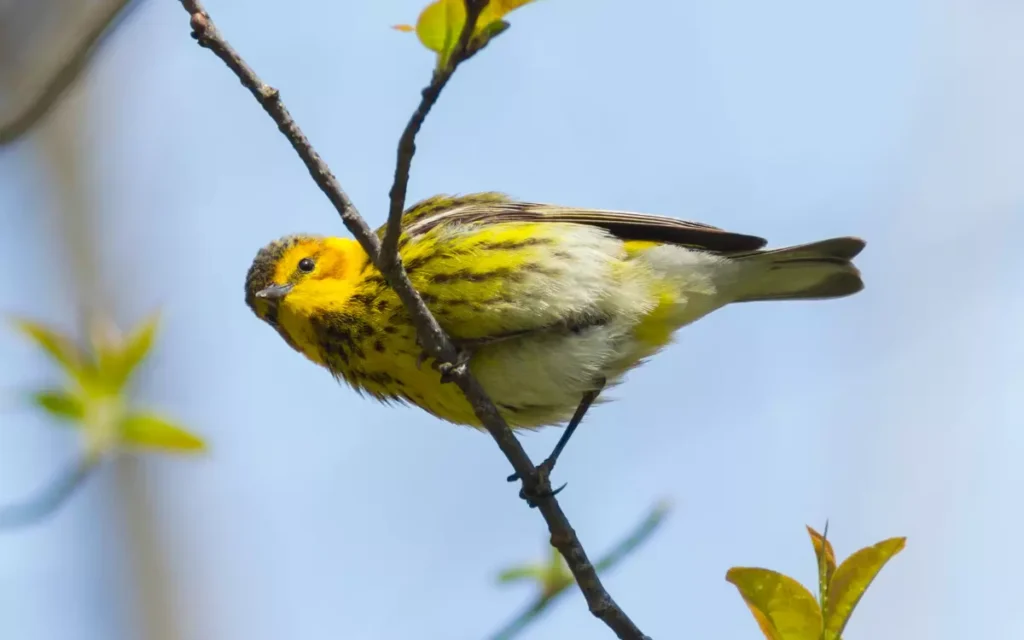
Appearance:
- Males: Yellow-olive back, yellow underparts streaked with black, distinctive chestnut cheek patch
- Females: Duller overall with faint streaking
- Size: 4.7-5.1 inches long
Behavior: Cape May Warblers often forage at the tips of branches in conifers, sometimes hanging upside down to reach insects or nectar from flowers.
Where to find them: Cape May Warblers pass through South Carolina during spring and fall migrations. They’re more common along the coast during these periods.
Best Places to Spot Warblers in South Carolina
South Carolina offers many excellent locations for warbler watching:
Congaree National Park – The old-growth bottomland forest is perfect for spotting Prothonotary Warblers, Northern Parulas, and many other species.
Francis Beidler Forest – This Audubon sanctuary features a boardwalk through ancient cypress-tupelo swamp, where you can find Prothonotary Warblers and other wetland species.
Table Rock State Park – The mixed forests of the upstate are ideal for Black-throated Blue Warblers, Black-and-white Warblers, and Ovenbirds.
Huntington Beach State Park – The diverse habitats here support many warbler species during migration periods.
Four Holes Swamp – An excellent spot for Prothonotary and Hooded Warblers.
When to Go Warbler Watching in South Carolina
Season Warbler Activity Best Species to Look For Spring (March-May) Peak migration American Redstart, Black-throated Blue, Magnolia, Cape May Summer (June-August) Breeding season Prothonotary, Northern Parula, Hooded, Pine Fall (September-November) Fall migration All migratory species, often in duller fall plumage Winter (December-February) Resident and wintering species Yellow-rumped, Palm, Pine
Tips for Identifying Warblers
- Learn the songs – Warblers are often heard before they’re seen. Familiarize yourself with their distinctive songs using bird identification apps.
- Note the habitat – Different warbler species prefer specific habitats. Knowing where to look can narrow down your identification options.
- Watch for behavior – Many warblers have distinctive behaviors, like the tail-wagging of Palm Warblers or the trunk-creeping of Black-and-white Warblers.
- Invest in good binoculars – Warblers are small and often stay high in the canopy. Quality optics make identification much easier.
- Patience is key – Warblers move quickly and can be challenging to spot. Take your time and scan methodically through vegetation.
Conservation Status
Many warbler species face threats from habitat loss, climate change, and collisions with buildings during migration. Organizations like the South Carolina Audubon Society work to protect critical habitats for these birds.
You can help by:
- Supporting conservation organizations
- Making your yard bird-friendly with native plants
- Keeping cats indoors
- Reducing window collisions by using bird-friendly glass or decals
Final Thoughts
South Carolina’s diverse habitats make it a wonderful place to observe warblers throughout the year. From the golden flashes of Prothonotary Warblers in swamps to the zebra-striped Black-and-white Warblers creeping along tree trunks, these small birds bring both beauty and ecological benefits to our state.
Next time you’re outdoors, listen for their songs and watch for movement in the trees. With practice and patience, you’ll soon be identifying these colorful jewels of the forest.

